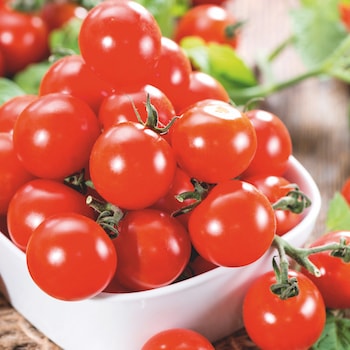Eating a balanced diet that’s rich in fruit and veg is good for you. And while there’s no single ‘superfood’ that can suddenly transform your health overnight, there’s a growing body of evidence to suggest that certain varieties of fruit and vegetables are better for you than others. Here are some of the crops that deliver the best nutritional bang for your buck…
Browse our full range of grafted vegetable plants for a quick shortcut to healthy homegrown harvests.
Getting the most from our food
Working alongside Exeter University, the Suttons horticultural team embarked on a research programme to identify exactly which homegrown vegetable varieties had the highest levels of specific nutrients. The research focused on phytonutrients which are thought to play an important protective role against a wide range of illnesses and degenerative conditions, as well as promoting overall well being.
Because many of the fruit and vegetables that were found to contain the most nutrients aren’t available in supermarkets, the only way to get them is by growing your own. Knowing which varieties to choose, and learning how to prepare them in the healthiest way, ensures you get the most from your harvest.
Here are some of the questions we attempted to answer:

1. Are homegrown tomatoes better for you?
Lycopene is a powerful antioxidant found in tomatoes, but not all tomatoes are created equal and some varieties contain more than others. So which homegrown tomatoes contain the most lycopene? One of our top performers is ‘Crimson Cherry’. Read the full article to learn more.

2. Is it best to store squashes before eating them?
Our research showed that, while most vegetables are best eaten as soon as possible after harvesting, squashes become more nutrient-dense after they’ve been stored for a while. Read our article about why it’s best NOT to eat squashes fresh, for the full explanation.

3. Which fruit has more anthocyanins than blueberries?
Blueberries are often celebrated as the most super of all the ‘superfoods’. But did you know that there’s another fruit which is even more nutritious? Easy to grow, tasty, and incredibly good for you, the blackcurrant could delay cognitive aging and relieve signs of depression. Learn more in our full article: Which fruit is healthier than a blueberry.

4. What’s the healthiest part of an apple?
It’s said that an apple a day keeps the doctor away, but what is it that makes apples so good for you? As well as phytonutrients and powerful antioxidants, the skin of red apples also contains an incredibly high proportion of anthocyanins.

5. Does tearing salad leaves increase their nutritional value?
It’s true. The way you serve your lettuce leaves has a bearing on their nutritional value. Tearing or shredding them provides a bigger nutrient hit than eating them whole. Find out why you should grow ‘Lollo Rossa’ lettuce seeds and how to prepare the healthiest salads

6. Do carrots improve your eyesight?
There’s a popular myth that carrots can help you to see in the dark. Whilst not strictly true, carrots do help to support eye health in a number of ways. Learn more about how carrots improve your eyesight here.

7. Is kale really a ‘superfood’?
Gaining in popularity in recent years and often referred to as a ‘superfood’, just how nutritional is kale? Find out why you should grow ‘Black Magic’ and why the glucosinolates found in this leafy green veg are so good for you in our article: Is kale a superfood?
Last Updated on September 13, 2024 by Suttons Horticultural Team




